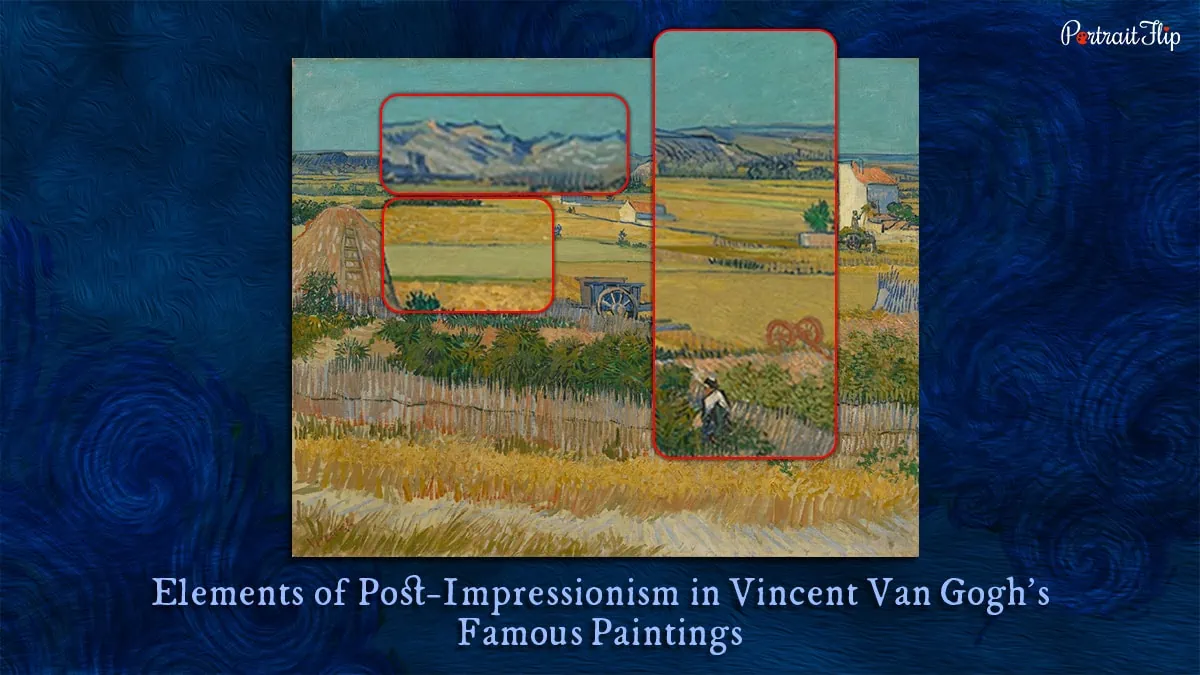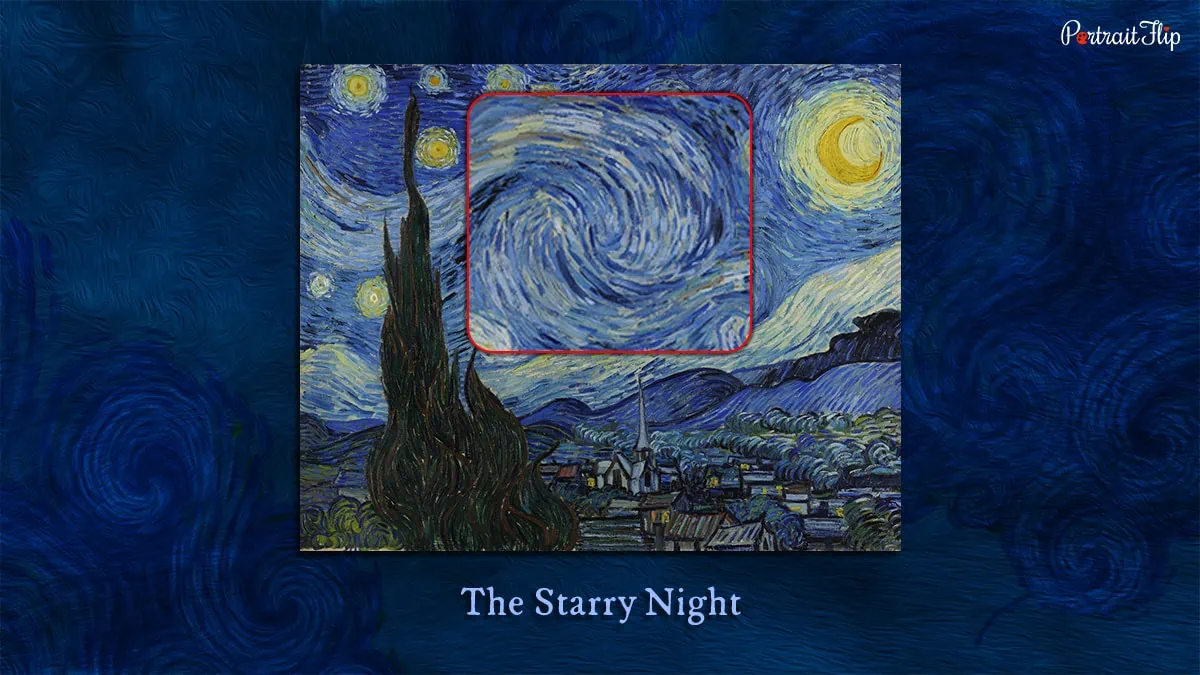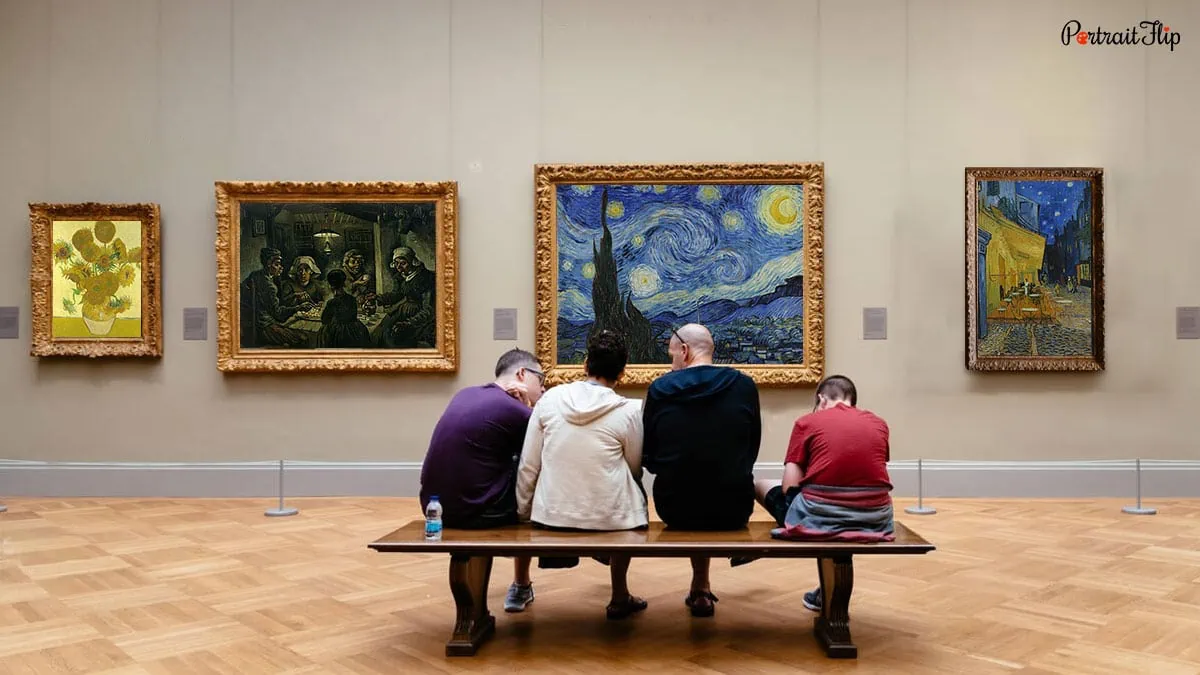Table of contents
Art is a weapon! And the artist is nothing less than a soldier!
Today we’re going to explore one such soldier of art who revolutionized the world with his paintbrush and canvas.
Vincent Willem Van Gogh was a Dutch post-impressionist painter who was known to portray his profound feelings on canvas.
His life is an amalgamation of artistry and philosophy with a tint of drama on the top!
Intrigued just by a brief introduction?
I have an in-depth recap of Vincent Van Gogh’s life lined up for you!
Let’s drift through Van Gogh’s life and try to understand his artistic brilliance and emotional profundity!
Early Life
Hailing from a Dutch upper-middle-class, affluent family, Vincent Van Gogh had five siblings, two brothers, and three sisters.
After completing his formal education, Van Gogh started working in the field of art dealerships.
Not coming to his surprise, it was a profession inherited by many members of the Van Gogh family.
He was transferred to London as his experiences in his hometown Zundert were very limited and not up to his expectations.
Van Gogh had a great time in London earning handsomely. However, it didn’t last for more days after he confessed his feelings for his landlady.
After facing rejection from the lady, Van Gogh started living a more depressed and isolated life.
This was at a breaking point in his life which evocated the hidden artist in him.
Suggested Read: Impressionist Paintings
Inspirations Behind His Art
We all are well acquainted with Vincent Van Gogh’s paintings. He created some of the greatest artworks to ever exist. But how did he become one of the biggest French painters, after all?
After his heartbreak in London, Van Gogh moved back to the Netherlands to stay with his parents.
He spent a couple of years in search of work and more specifically the purpose of life.
In 1881 Van Gogh visited France to see his cousin who was also an artist. Van Gogh tried his hand at selling his cousin’s paintings for a while.
He was intrigued by the beauty of painting ever since he got into the art dealership business.
But, he was not so sure about painting. However, after meeting some famous French artists , his hidden love for painting started evoking and he finally decided to pick up a paintbrush.
Important Figures in Van Gogh’s Life
Vincent Van Gogh was a lone wolf most of the time. But he had two people who supported him throughout his journey.
Paul Gauguin, a French painter and Van Gogh’s close associate, and Theo Van Gogh, Vincent’s younger brother.
Let’s know about how they impacted Vincent Van Gogh’s life!
Paul Gauguin
Van Gogh and Gauguin were close friends. Van Gogh shared one of his dreams with Paul Gauguin and asked for his help.
He wanted to open a studio in Arles, France. For that, he demanded Gauguin’s support.
However, Gauguin agreed to visit him in France but only if Vincent’s younger brother Theo Van Gogh would pay for his travel expenses.
He went to France and helped Van Gogh set up his own studio in Arles.
But the consequences that happened after he left were really scary.
Theo Van Gogh
Theo was Vincent’s younger brother. He was really close to Vincent Van Gogh.
Both of them wrote each other letters regularly. A record of more than 500 letters was found between Theo and Vincent.
Theo also provided financial support to Vincent many times.
For instance, when Vincent Van Gogh left his job as an art dealer, Theo was the one to back him up with some money.
Vincent also painted Theo’s portrait quite a few times. Many of them still reside in different corners of the world.
Elements of Post-Impressionism in Vincent Van Gogh’s Famous Paintings
Usually, when an art movement is budding, it tends to absorb some of the elements of its predecessors.
Something similar happened with post-impressionism. Few attributes of Impressionism like free brush strokes and uncertain outlining were evident in post-impressionism.
However, the genesis of new elements was an obvious thing to happen.
Artistic elements like vibrant color schemes, certain geometry, and more realistic paint applications were visible in post-impressionist artworks.
Guess what! Vincent Van Gogh’s art style was known to inculcate these elements in a very subtle way.
A complete example of this can be found in The Harvest painting by Van Gogh. Here’s a list of post-impressionist elements in The Harvest painting.

- Certain geometry can be seen in the Little Alps
- A vibrant color scheme is used to paint the crops
- Realistic paint applications are testified by the contrasting colors used
Best Artworks
Van Gogh created over 2000 artworks in his lifetime. His subjects covered a wide variety of elements spread across the diaspora.
He painted almost everything in his sight. From human subjects to still life, from mesmerizing landscapes to deep and philosophical art pieces.
Every Vincent Van Gogh painting is an accolade in itself. But, some of them are to be cherished forever.
Let’s get acquainted with a few Vincent Van Gogh artworks that depict the profundity of his emotions seamlessly.

- Starry Night: The most anticipated and famous painting by Van Gogh, it represents his mental state. The blue color used by Van Gogh represents a contrary emotion to the bright colors he used previously. The swirling brush strokes depict his jumbled and deteriorating mental health.
- The Potato Eaters: This Vincent Van Gogh painting sheds light on the harsh conditions in which the local peasants used to work and live. The shabby look on their faces represents the frustration within. The dark color scheme is a symbol of poverty. Their hands covered in dirt explains their hard work to earn their food.

- Sunflowers: A painting that portrayed the happy side of Vincent Van Gogh. Sunflowers were special to him. He often found himself lost in the serendipity of the sunflower field. Van Gogh quotes: “They’re not my favorite flowers, but they’re complex just like me. Whenever I gaze at them, it fills me with ecstasy”.
- Café Terrace at Night: A mesmerizing view of the Place du Forum in Arles, a star-studded sky, and a few people enjoying their time. Despite being a frustrated man, Van Gogh showed he was capable of creating utopian scenes like these.
Recommended Read: Famous Spanish Artists
Techniques Used
Such immaculate masterpieces are not certain to be created without a mastery of the painting technique.
Vincent Van Gogh surely had command over a few styles of painting. He used them as a tool in the creation of his famous paintings.
Let’s know about these methods in brief:

- Impasto: Layers of paint are spilled on the canvas and the artist spreads them using a flat knife in order to create strokes. Van Gogh used the Impasto method in his paintings like Sunflowers and Wheatfield with Crows.
- Thick Color Application: Van Gogh was fond of putting extra amounts of color on the canvas. His paintings Starry Night and Sunflowers are a prime example of this. Van Gogh attempted to give a 3-D effect to his paintings with a thick layer of paint.

- Long-Haired Paint Brushes: Vincent Van Gogh’s portraits often contained long and stretched layers of paint. Van Gogh accomplished them using his long-haired paintbrushes. The swirls in Starry Night are created using these brushes too.
- Use of Fingers: Vincent Van Gogh was a very passionate man. Despite having an arsenal of painting tools, he used his fingers to mix the color very often. In Wheatfield with Crows, the parallel swirls made in a transient manner are done by his fingers.
Suggested Product: Handmade Human Pencil Portrait
Downfall and Depression
Vincent Van Gogh was indeed a proficient artist. He was great at handling the canvas and the paintbrush.
But he wasn’t good at handling real-life situations. Van Gogh had to face difficult situations quiet a lot of times in his life.
And his response was excessive consumption of alcohol, coffee, and tobacco whenever he found himself in a tough circumstance.
This reduced his hunger resulting in a malnourished Van Gogh.
Vincent van Gogh even cut off his ear once. His doctor stated this situation as a result of over-excitement which lead him towards Bipolar Disorder.
Who could’ve imagined that a man who’s sad and depressed to the core would end up creating such astonishing artworks.
Vincent Van Gogh’s Death
The apparent reason for Van Gogh’s death happens to be a couple of gunshot wounds on his body.
It was a suicide! But, why would such a great artist commit suicide?
Actually, Van Gogh didn’t receive any recognition for his stunning artworks.
He wasn’t even treated like a human by the society. The lack of empathy created a void in his life and he gave up!
Whom He Influenced
Van Gogh didn’t receive the stardom he deserved when he was alive.
Although, many art historians and art critics have acknowledged Van Gogh’s contribution towards the progress of modern art through his passion.
But the man was always in a bad light for his behavior and never really got his due as an artist.
His greatness was testified when his artworks inspired an entire art movement, Expressionism.
French expressionist painter Chaïm Soutine is known to be a great admirer of Vincent Van Gogh’s art.
He followed Van Gogh’s footsteps and created some really amazing paintings.
The pain, agony, and passion can be witnessed through Vincent Van Gogh paintings.
Vincent Van Gogh Museum

Established in 1973, in Amsterdam, The Netherlands, the Van Gogh Museum is a tribute to the artist’s legacy. It’s nothing less than heaven for Van Gogh lovers.
It contains all of his surviving artworks with detailed descriptions and stories behind their creation.
In this museum, Starry Night has been kept in such a way that the viewers can also witness Vincent Van Gogh’s immersive experience.
Conclusion
Vincent Van Gogh, now this name is more than enough to explain the story behind it.
A passionate, determined, frustrated, talented, and a very philosophical man. Where else do you find a human like that besides in Vincent Van Gogh’s Biography itself!
Van Gogh was an artist who turned his pain and agony into scintillating artworks; a tortured artist in its truest sense.
He elevated the standards of modern art for an eternity!
It’s not certain that the world would see an artist or an artist like his ever again.
Not only is he celebrated for his beautiful artworks and landscapes but each of his paintings is sold for a towering price.
Original Van Gogh artworks are either kept in museums or auctioned for millions of dollars.
It’s not easy and affordable to own a Van Gogh painting.
But if I tell you that you can get an exact museum-quality Van Gogh replica for a few hundred bucks then?
We at PortraitFlip produce high-quality, exact replicas of famous artworks at that includes the iconic works of Vincent Van Gogh.
Author’s Note
Hello Readers,
I thank you all for reading my blog about Vincent Van Gogh till the very end.
I hope my writing did justice to your time and curiosity.
We keep on publishing these types of valuable and informative blogs about art and aesthetics.
Follow us on Instagram and subscribe to our YouTube channel!
See you soon in the next blog!
FAQs
Dutch artist Vincent Van Gogh created the masterpiece Starry Night.
His younger brother Theo Van Gogh backed him financially.
Van Gogh lived in France for more than a decade. He created most of his artworks in France itself.
Yes, Van Gogh shot himself twice resulting in his death from the wounds.





